All photo’s except for image of Pilgrim’s ad courtesy of Rob Cavillini.
Visits to Philadelphia by English touring teams were important events in the wider popularization of soccer in the city. An exhibition game against the touring B. J. T. Bosanquet cricket team in 1901, the first international friendly to be played in Philadelphia, garnered approving coverage in the Philadelphia Inquirer and resulted in a boom of the game locally. Similarly, the games played against the touring Pilgrims club in 1905 and 1909 were major events on the soccer calendar, the victory by Philadelphia Hibernian in 1909 resulting in “great rejoicing in Kensington.”
Another English team, Corinthian FC, also visited Philadelphia, playing eight games against Philadelphia sides over three tours in 1906, 1911, and 1924.
Popularizers of soccer
Corinthian FC was founded in 1882 with one purpose: to stem the tide of defeats suffered by England against Scotland. England had suffered a series of six losses to Scotland and the FA had decided enough was enough. N.L. Jackson, assistant secretary of the FA, recognized that one factor in Scotland’s supremacy was that its players had greater opportunities to play together, whereas England’s players frequently only met on the same ground when called up for an international friendly. Inviting the top players from England’s public schools, Jackson’s idea was to provide opportunities for the country’s best amateur players to play together by organizing midweek matches against amateur and professional clubs so as to not conflict with the players existing club obligations. Corinthian would thus serve as a kind of active player pool for the England squad that had the added advantage of the players regularly playing together against quality competition. Interestingly, Jackson would later have a hand in the organization of the Bosanqueut cricket team’s tour in 1901 that resulted in the first international soccer friendly in Philadelphia.

Corinthian FC founder N. L. Jackson had a hand in the first international friendly in Philadelphia in 1901.
From its beginning, the club’s rules forbade entering any kind of challenge cup or competing for “any prizes of any description whatever,” a reflection of the kind of gentleman amateur sportsman ethos that naturally flowed from the public school background of its members. This background also influenced the missionary outlook of the club’s tours around the world aimed at popularizing soccer (or at least the “proper” way of playing the sport), which was already spreading thanks to the employees of British companies or expats setting up their own companies in various corners of the world. Beginning with tours of South Africa in 1897 and 1903, Corinthians undertook tours of Central Europe and Scandinavia in 1904, as well as in Holland and Germany followed by Canada and the US in 1906. More tours would follow with trips to Brazil in 1910 and 1913 proving to be key moments in the development of the sport there.
The Corinthians influence on the history of soccer would extend beyond helping to spread the game around the world. C. Wreford-Brown, who scored eight goals for Corinthians over 161 appearances in the 1890s, is generally credited with coming up with the word “soccer” as an abbreviation for Association football.
The 1906 tour
Rob Cavillini writes in Play Up Corinth: A History of the Corinthian Football Club that the club was invited to North America by “the Canadian and Philadelphia football authorities,” with financial backing from the London daily, The People. A report from a 1905 issue of The American Cricketer gives a good sense of what was anticipated from the tour.
“Their advent is being keenly discussed and looked forward to by Association enthusiasts. That the visit of so renowned a team will give a tremendous fillip to the game goes without saying, but more than this they will provide an object lesson as to how it should be played, not only to the ardent followers and players, but to the uninitiated as well. Many people who have hitherto never given a thought to Association football will attend matches out of mere curiosity and it will be, indeed, surprising if the majority does not continue to follow the game with enthusiasm and lend it support long after the Corinthians have left these shores.”
It would prove to be an exhausting tour—by the time the team arrived in Philadelphia on August 30, 1906, they had played nine matches in 20 days, having out-scored their Canadian and American opponents 58 to 8 for a 8–0–1 record. On several occasions, Corinthians followed up their soccer matches with a cricket game against local XIs.
With reports of the team’s results in local papers preceding their arrival in Philadelphia, serious followers of soccer had no doubts about the local teams’ chances against such quality opposition. This knowledge was buttressed by the results of Philadelphia sides against The Pilgrims the previous year, which saw Philadelphia teams lose three games by the total score of 19 to 1.
Corinthian was scheduled to play three games in Philadelphia: against an All Cricket Club League XI on August 31; against Albion, “winner of the Philadelphia championship” on September 1; and finally against an All-Philadelphia team on Labor Day, September 3. The Philadelphia Inquirer followed the selection trials for the All-Philadelphia side at Third and Lehigh, writing on August 19, “There was very little combination shown throughout the game, each player relying more or less on his own efforts.” The final trial game between a team of “Probables” and a team of “Possibles” was mired by poor field conditions, the Inquirer reporting on August 26, “Scientific play was out of the question, as the playing area was a sea of mud, and it was almost impossible to control the ball.” After the game, which ended in a 2–2 draw, the All-Philadelphia side was announced. Among those selected was future National Soccer Hall of Famer David Gould.
The Inquirer’s match report for the August 31 friendly with the All Cricket Club XI at the Merion Cricket Club noted, “As was expected the cricketers were no match for their opponents and were kept on the defensive almost throughout the game. Occasionally the ball would be worked up into the Englishmen’s territory, but it never stayed there long.” After scoring four goals in the first half—the opening goal was scored after three minutes of play—the visitors “let up materially in their play and were apparently satisfied just to add two more points to their score.” Final score, Corinthian 6–0 All-Cricket Club.
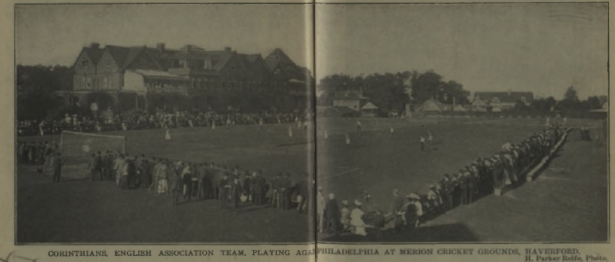 When Corinthian faced Albion at the Germantown Cricket Club the next day, the September 2 edition of the Inquirer reported, “Nearly four thousand spectators watched the game and the visitors received almost as much applause as the home team.” The tourists proceeded to crush Albion 9–0, with G.C. Vassall scoring 5 goals. The Inquirer reported that, despite the bigger scoreline, the match was actually better than the one that had occurred the previous day as “occasionally the home team afforded them some little opposition in their forward march towards the local team’s goal.” Nevertheless, the gulf in quality was obvious and the Inquirer concluded, “It would be awful to contemplate what they could do, though, with even the best team that Philadelphia could put into the field if they let themselves out to the limit.”
When Corinthian faced Albion at the Germantown Cricket Club the next day, the September 2 edition of the Inquirer reported, “Nearly four thousand spectators watched the game and the visitors received almost as much applause as the home team.” The tourists proceeded to crush Albion 9–0, with G.C. Vassall scoring 5 goals. The Inquirer reported that, despite the bigger scoreline, the match was actually better than the one that had occurred the previous day as “occasionally the home team afforded them some little opposition in their forward march towards the local team’s goal.” Nevertheless, the gulf in quality was obvious and the Inquirer concluded, “It would be awful to contemplate what they could do, though, with even the best team that Philadelphia could put into the field if they let themselves out to the limit.”
A report in the Inquirer on the day of the the final match in Philadelphia on September 3 described it as the “most important” of the local fixtures. Despite the fact that the All-Philadelphia team had been “carefully chosen and consists of the best players in the city,” the Inquirer was realistic about the side’s prospects. “Although it is recognized that All Philadelphia must look for defeat the game is sure to be a magnificent one and worth going miles to see.”
The Labor Day game, again at Germantown Cricket Club, saw an even bigger turnout than the previous matches, the Inquirer reporting some seven thousand spectators were in attendance. It also saw an even bigger scoreline with Corinthians winning 12–0. In this match Vassall was joined by G.S. Harris in scoring four goals each. Vassall was injured scoring his final goal and moved between the posts, whereupon starting goalkeeper T.S. Rowlandson, now playing as a field player, tallied a goal of his own. The match report in the September 4 edition of the Inquirer said, “The passing and general combination work of the Corinthians was a revelation. There was no useless kicking, every time the ball was booted a player was there to receive it, and once the pack got started with it the local backs were invariably beaten and a goal followed.” A cricket match played after the final game was also won by Corinthians by 64 runs.
Cavallini writes, “[T]he players in Philadelphia were generally university men”—which was certainly true of the All Cricket Club’s side—”and all the games played in the city were played in a sportsmanlike manner.”
The tour moved on from Philadelphia for the final five games of the tour, Corinthians winning three more games, drawing for the second time, and losing the only game of the tour to the Fall River team, 0–3. With players having to leave the demanding tour—17 games in 35 days—to return to England, the team finished the last two matches with only one reserve.
A review of the tour that appeared in the London Sportsman under the byline of “One of the Team,” praised the grounds in Philadelphia as among the best in the tour, emphasizing that the the condition of playing fields would have to be addressed if the game were to develop properly in America. “It is certain that if Association football is to flourish alongside American football—for supplant it never can—at any rate in the colleges more attention must be paid to the ground question, so that the game has every chance of developing as an exposition of scientific combination and not as a kick and rush business.”
Although Cavillini calls the tour a success “with regards to results and attendance,” the unnamed author of the London Sportsman review notes that it may not have been the financial success the the backer of the tour, The People newspaper, had hoped for. While The People “had intended to devote any profits to the presentation of cups for competition in Canada and America,” the unnamed reviewer concludes that “owing to the indifferent gates, it is doubtful whether they will be able to carry out there purpose.”
Back in Philadelphia, while The People may not have presented cups, the Inquirer reported on October 16, 1906, “The association football players participating in the recent games with the Corinthians, of London, will be presented with handsome gold medals this evening at McGarrity’s Hall, Fourth Street and Lehigh Avenue.” The players would also be given “their pro-rata share of the gate receipts at the same time.”
The 1911 tour
The Corinthians second visit to North America in 1911 included 21 matches, only five of which took place in the United States, the rest in Canada. One reason for the small number of US fixtures was related to ongoing struggles over the control of the game both in England and in the United States. Corinthians broke from the English FA in 1907 over the requirement that local associations admit professional clubs, a requirement that Corinthians and other clubs viewed as detrimental to the principles of amateur sport. Corinthians was subsequently banned from playing against clubs that were members of the FA, which led the club to engage in more overseas tours.
The American Football Association (AFA), which was recognized by the English FA and was the organizer of the American Cup tournament that had been won by Tacony in 1910, claimed to be the sole governing body of the sport in the US. As such, it followed the FA’s lead and prohibited member clubs from playing Corinthian when they came to North America in 1911. Many AFA member clubs were furious that the AFA appeared beholden to the wishes of another national organization and the Inquirer reported on August 24 that the decision was “likely to result in one of the biggest soccer wars the East has ever seen.” Because the AFA’s influence did not extend beyond the Northeast US, the first two games were played against Chicago clubs that were not AFA members. A picked New York team, consisting of players selected from the rival New York State Amateur League, would also play Corinthians, as would Newark, who had decided to defy the AFA. The final match of the tour would take place in Philadelphia on September 19 against a picked team from the Associated Cricket Clubs League, which was independent of the AFA.
The Inquirer reported on September 12, “The Associated Clubs have decided to play the Englishmen mostly to try and boom soccer in this city and vicinity among the younger element, who will be invited to witness the game.” On September 13, the Inquirer reported that the match would be held at Germantown Cricket Club and that admission would be free. Of the players selected to represent the Cricket Clubs XI, the Inquirer described, “The team is exceptionally strong in every department of the game and those who take in the game can rely on witnessing some classy soccer.”
What was witnessed was, as the Inquirer reported on September 20, “one of the weakest displays ever witnessed by a picked eleven against any English team that has ever played in this city.” With Corinthians moving the ball with “clock-like precision,” the visitors scored three unanswered goals in the first ten minutes. While Corinthian continued to score “at a rapid gait,” the Inquirer reported, “the few occasions that the homesters were dangerous could be counted on one hand.” In the end, the match concluded as a 19–0 victory for the visitors, tying the largest result in the history of the club, first set against a Cincinnati side during the 1906 tour.
The decision by the AFA to prohibit member clubs from playing Corinthians joined a long list of grievances against the organization. These would lead to the founding on October 11 of the American Amateur Foot Ball Association (AAFA), “which immediately set itself to the tasks of standardizing rules, bringing all of the various associations and leagues together into one harmonious body, laying the groundwork for an application for membership in FIFA, the world soccer organization, and establishment of a national tournament.” While FIFA told the AFA and AAFA to work out their differences, the influence of the AAFA began to widen. By early 1913, the AAFA was in the ascendancy and on April 5, organizations loyal to it voted to form the United States Football Association (USFA), known today as the United States Soccer Federation. The AFA itself joined the new governing body later that year.
The 1924 tour
The split between Corinthians FC and the FA saw its position in the English football world decline. World War One led to greater concerns for its members. After the war, the surviving members—22 had died in the war—voted to modernize the club. One result of this was the decision to enter the FA Cup. The club continued to tour but now it would largely continue to do so in Europe.
In 1924, the club toured Canada and the United States in what Cavallini describes as “the last of the Corinthian FC’s epic overseas tours,” with 22 games over six weeks. The focus was once again on Canada with only five game in the US between September 4-12, four of which were against Philadelphia teams. Only one of the Philadelphia teams, Philadelphia Field Club (not to be confused with the Bethlehem Steel FC team that played in Philadelphia in the 1921-22 season under the same name) was a professional side in the American Soccer League, as was the sole non-Philadelphia side, Brooklyn Wanderers, both members of the American Soccer League (ASL), founded in 1921. The rest of the Philadelphia opposition was “mainly made up of young graduates and students of universities.”
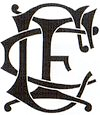 While both Philadelphia FC and Brooklyn Wanderers managed 1-1 draws, the less experienced amateur sides all suffered defeat. In the first game of the series on September 4, University of Pennsylvania Freebooters lost 8–1. Corinthians drew with Philadelphia FC on September 6 before defeating Philadelphia Cricket Club 7–1 on September 8. Drawing with Brooklyn Wanderers on September 10, Corinthian returned to defeat the Gentlemen of Philadelphia 3–0 on September 12.
While both Philadelphia FC and Brooklyn Wanderers managed 1-1 draws, the less experienced amateur sides all suffered defeat. In the first game of the series on September 4, University of Pennsylvania Freebooters lost 8–1. Corinthians drew with Philadelphia FC on September 6 before defeating Philadelphia Cricket Club 7–1 on September 8. Drawing with Brooklyn Wanderers on September 10, Corinthian returned to defeat the Gentlemen of Philadelphia 3–0 on September 12.
Corinthian FC’s first North American tour in 1906, much like the 1905 and 1909 tours by the Pilgrims, were initially viewed as opportunities to show Americans how the game of soccer ought to be played. But by 1911, while it was still recognized that playing Corinthians could help to “boom” the sport, soccer had gained enough native followers that the idea of national governance of the game independent of the policies of England’s FA was gaining wide acceptance. Indeed, the 1911 tour helped to play a part in the foundation of the US Soccer Federation as the national governing body of the sport. By the time of the 1924 tour, the US Open Cup (then known as the National Challenge Cup) was widely viewed as the competition that determined the US champion. 1924 would be the final edition of the American Cup tournament, which would be won by Bethlehem Steel. While the AFA faded into history, soccer in America was entering its first golden age with the ASL, which for a time was second only to baseball as the most popular professional sports league in the country.
Corinthian FC would itself fade into history, finally merging with another amateur club to become Corinthian-Casuals FC in 1939. Meanwhile, the tradition of international friendlies in Philadelphia continues, both as an opportunity to “boom” the sport by seeing top quality teams from around the world, and a a measure of how far US soccer has come and may still have to go.
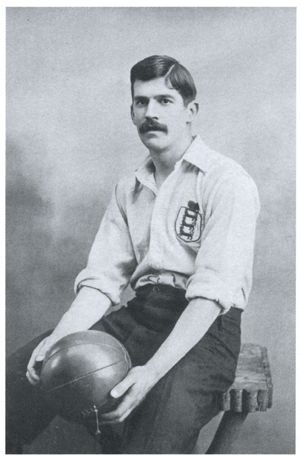
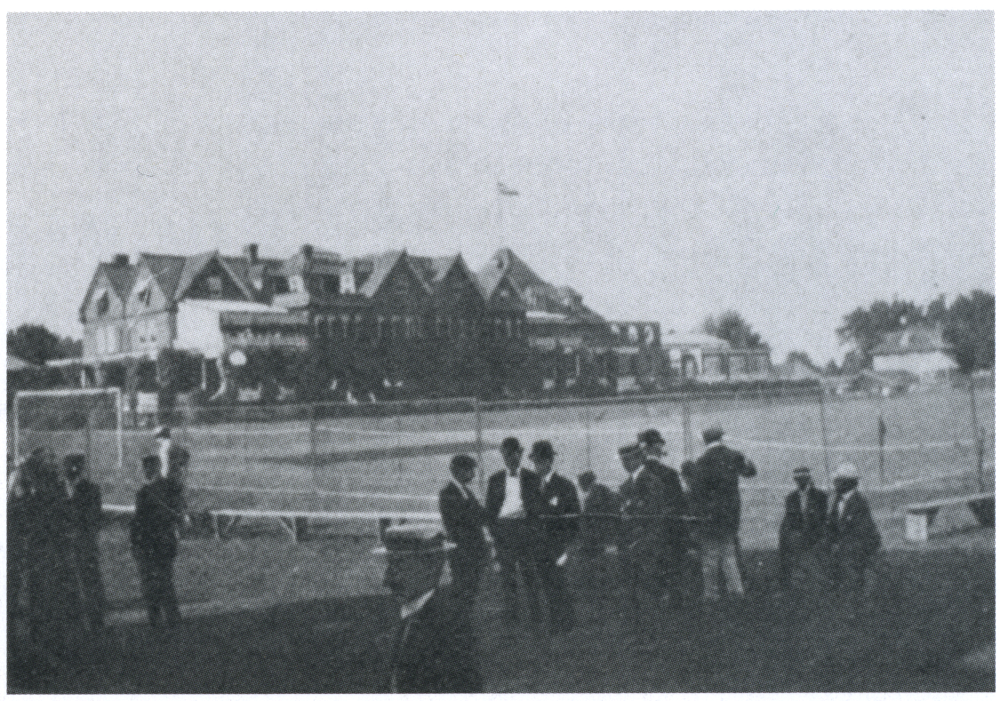

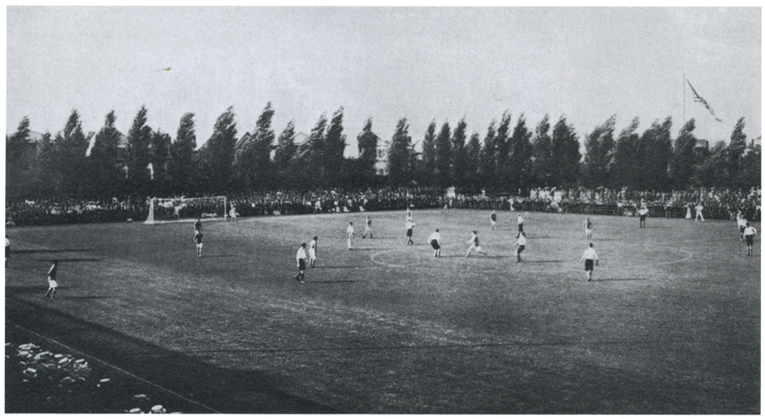


If any one knows, where and how can I get these cool old soccer photographs? I would love to frame one or two in my office.